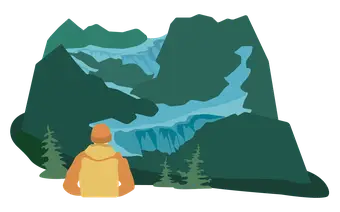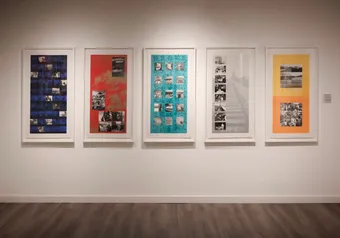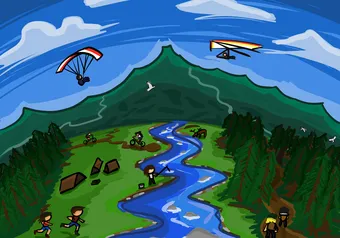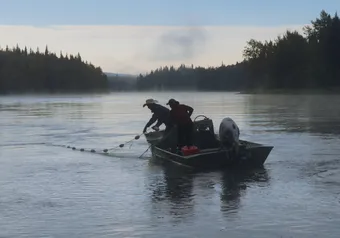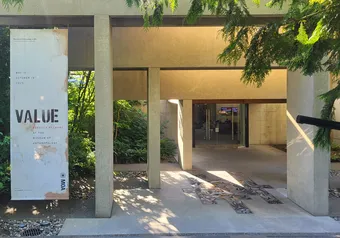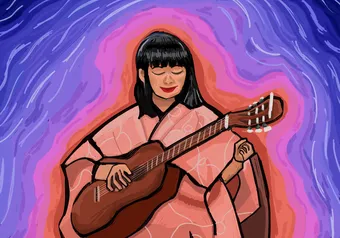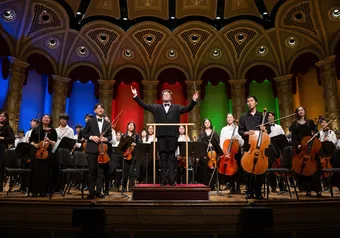Just under two years after the UBC Board of Governors declared a climate emergency, researchers from every corner of UBC continue to study how society can adapt to a changing climate.
On October 13 and 14, UBC Research and Innovation organized the UBC Climate Change Research Symposium. This two-day event featured groundbreaking research from departments across both UBC Vancouver and UBC Okanagan. The Ubyssey attended day two of the symposium, which consisted of three panels and a keynote presentation by Naomi Klein, award-winning journalist and the new Professor of Climate Justice in the department of geography here at UBC.
The first panel of day two focused on how society can adapt to climate change. This portion of the event was chaired by Dr. Rashid Sumaila, professor at the UBC Institute for the Oceans and Fisheries, along with four panelists.
Lightning McQueen v. climate change: Electric vehicles as energy sources
The first presentation in this panel was titled “Feathers and Dinosaurs: Urban Exaptation and an Adaptation Strategy” by Dr. Walter Mérida, a professor in the department of engineering.
He discussed the evolution of the energy system over the past few centuries, such as the fact that this evolution has been too slow and society must accelerate decarbonization, and the concept of urban exaptation.
Mérida explained how, for many years, the human population stayed low and stable and was reliant on “muscle power” or firewood as an energy source. The Industrial Revolution and the steam engine enabled large scale human productivity by transitioning from biomass to coal to oil to gas.
He stated that we are now in the midst of another energy revolution: renewable energy. He described this as the progressive decarbonization of the energy system. However, the rate of this decarbonization is still too slow, which he credits to the slow nature of politics.
“The normal innovation processes and the normal investment processes are too slow and too small to really face the challenge [of climate change]” he said.
He tackles this problem through urban exaptation — the practice of using urban assets in different ways. For example, his research at Mérida Lab focuses on using parking garages and electric vehicles as sources of renewable energy.
One strategy to leverage vehicles as sources of renewable energy would be to gather a large amount of electric vehicles in one area and use their reversible car batteries to deliver power to the energy grid when needed. This method can be implemented without significant additional investment and is practical since cars are already stationary for most of their lives.
Hot girl summer: Developing strategies for future heat waves
The second panelist of the day was Dr. Kate Weinberger, assistant professor in the UBC department of occupational and environmental health. Her research focuses on “quantifying the human health impacts of extreme weather events linked to climate change, such as heat waves.”
Weinberger describes heat waves as “multi-day periods of extremely hot weather.”
During the June heat wave earlier this year, there was not only an increase in heat-related deaths but also a sharp increase in heat-related illnesses. Weinberger explained that there is a large amount of epidemiological evidence that even a single day of hot weather can lead to an increase in deaths and illnesses. She highlighted how troubling this is, especially considering how temperatures are rising due to climate change.
According to Weinberger, “we're at a point where we have this really critical need to both identify and implement effective heat adaptation strategies that keep people safe.”
One such strategy is heat warnings — the practice of notifying the public a few days ahead of time when there will be really hot weather. It may also include recommendations for how individuals can stay healthy during that period and potentially trigger municipal intervention that will bolster public safety.
Her research suggests that while warnings alone do not decrease death rates on particularly hot days, there may be local factors which affect the effectiveness of the warnings. Weinberger’s research team is currently trying to figure out what these factors might be.
Lastly, she stresses that warnings are only one tool of a larger “adaptation toolbox.”
Hold my bucket: Reducing water usage in the agriculture industry
Dr. Mark Johnson — professor at the UBC institute for resources, environment and sustainability — presented shortly after Weinberger. His address focused on soil and water with an emphasis on the strategies that can be implemented to reduce water usage in the infamously water-intensive agriculture industry.
His current research focuses on gradually increasing the amount of carbon stored in soil every year in order to offset the amount of carbon that's being released through fossil fuel combustion.
Johnson’s research team specifically investigated biochar, i.e. hydrolyzed biomass, to see how its addition to soil might increase crop yield and reduce the amount of water used in agricultural processes. Another strategy is to use agrophotovoltaics — the process of growing plants under solar panels. This practice has also been shown to enhance plant growth and reduce water consumption in industrial agriculture.
We’re all in this together: Developing community-based and -led climate responses
The final presenter of the first panel was Dr. Danielle Ignace, the new Indigenous natural sciences professor in the UBC department of forest and conservation sciences. She is a member of the Coeur d’Alene tribe on her father’s side and the Menominee tribe on her mother’s side.
She stated that part of adapting to climate change as a society is amplifying Indigenous voices and knowledge. This is because the way that Indigenous communities manage and form relationships with the land and water have been shown to be both sustainable and healthy — especially compared to the practices of most settlers.
Her current research focuses on carbon. Specifically, she studies how carbon is stored in soil above ground and how carbon is exchanged between Earth’s different carbon storage pools including the ocean, atmosphere, land and living things. This exchange process is called carbon flux. She also studies nutrient cycling and the availability of nutrients, such as nitrogen, during processes like decomposition.
If more carbon is being released into the atmosphere than is being absorbed into the system (i.e., the land, the ocean and living things) then the system acts as a source of carbon input and contributes to climate change. Conversely, it is good if more carbon is absorbed into the system than released into the atmosphere.
She explained that this scientific framework is very standard in Western science but it lacks one crucial aspect: Indigenous perspectives.
Ignace emphasized the importance of acknowledging the history of European colonization and how that history, along with generations of Indigenous knowledge and stewardship, has affected the land and different societies’ relationships with the land.
She highlighted the importance of developing respectful reciprocal relationships with Indigenous communities where projects are produced with, by and for Indigenous communities. It is important to make science accessible by combining different forms of communication and storytelling in a way that is both respectful and preserves cultural knowledge. For Ignace, the way forward is to recentre Indigenous ways of knowing and relating to the land that amplifies diverse voices and diverse knowledge from different generations and elders in Indigenous communities.
“If we, as scientists, are seeking solutions about how communities can adapt to climate change, are we actually involving the community in the process of finding solutions?” said Ignace.
First online
Share this article


